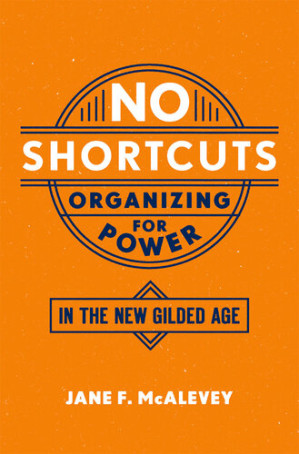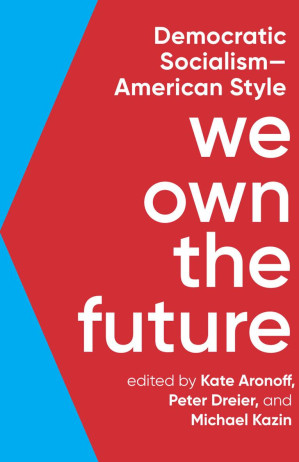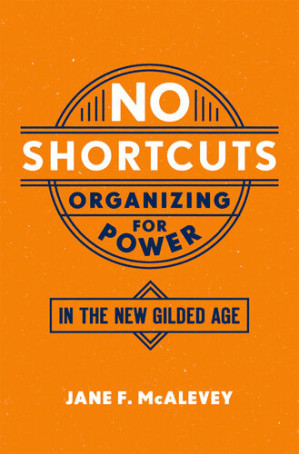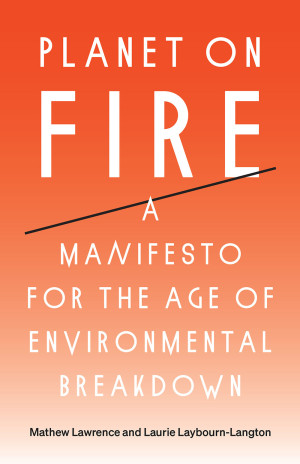Mobilizing is not organizing—and confusing them leads to failure.
McAlevey distinguishes between mobilizing (activating existing supporters) and organizing (building new power through leadership development and majority participation).

Book summary
by Jane F. McAlevey
Organizing for Power in the New Gilded Age
Offers a rigorous organizing framework for wielding power against landlords, banks, and agencies.
Topics
Read this book as a practical organizing manual. Focus on McAlevey's distinction between "mobilizing" and "organizing" and her framework for building majority power. Use Readever's highlighting to identify the specific organizing techniques that could be adapted to your campaigns. Pay special attention to the case studies of successful strikes and the analysis of why other approaches fail.
Things to know before reading
This book presents a rigorous approach to building working-class power through strategic organizing. Be prepared to encounter candid assessments of organizing failures and detailed analysis of what makes campaigns succeed. Understanding the difference between mobilizing and organizing will help contextualize McAlevey's framework. The book assumes some familiarity with labor or community organizing contexts.
No Shortcuts presents Jane McAlevey's powerful framework for building working-class power through strategic organizing rather than mobilizing. Drawing on decades of experience in labor and community organizing, McAlevey argues that real change requires building majority power through deep organizing that transforms participants into leaders, rather than relying on elite negotiations or symbolic protests.
McAlevey's framework reveals why most organizing fails—and provides the tools to build campaigns that actually win against powerful opponents.
McAlevey distinguishes between mobilizing (activating existing supporters) and organizing (building new power through leadership development and majority participation).
McAlevey introduces "structure tests"—specific actions that measure and build majority participation at each stage of a campaign.
Successful organizing addresses workers' complete lives, not just their workplace concerns.
Ready to continue? Launch the Readever reader and keep turning pages without paying a cent.

Dean Spade
Practical guide to designing resilient community care networks

Kate Aronoff, Peter Dreier, Michael Kazin
Democratic socialism, American style

Angela Y. Davis
Ferguson, Palestine, and the foundations of a movement
This summary gives you the organizing tools to build campaigns that actually win against powerful opponents. You'll learn how to distinguish between mobilizing (which creates temporary activity) and organizing (which builds lasting power), and how to implement the specific techniques that transform passive supporters into active leaders who can sustain long-term struggles.
Key idea 1
McAlevey distinguishes between mobilizing (activating existing supporters) and organizing (building new power through leadership development and majority participation).
The book's central insight is that most progressive campaigns fail because they confuse mobilizing with organizing. Mobilizing activates people who already agree with you for specific actions, while organizing builds new power by developing leaders, identifying self-interest, and achieving majority participation. McAlevey shows how mobilizing-focused campaigns win temporary concessions but fail to build lasting power, while organizing-based campaigns transform participants and create durable organizations.
She provides detailed case studies of both approaches, showing how mobilizing campaigns collapse when the initial energy fades, while organizing campaigns continue to grow and win even bigger demands. The distinction explains why some unions win transformative contracts while others achieve only marginal improvements.
Remember
Key idea 2
McAlevey introduces "structure tests"—specific actions that measure and build majority participation at each stage of a campaign.
Structure tests are concrete actions that require participants to demonstrate their commitment and build the organization's capacity. Examples include getting workers to sign public petitions, attend membership meetings, participate in practice pickets, or engage in escalating actions. Each structure test serves multiple purposes: it measures real support, identifies leaders, builds collective confidence, and creates organizational capacity.
McAlevey shows how successful campaigns use escalating structure tests to build toward major confrontations like strikes. Each test prepares participants for the next level of struggle while weeding out unreliable strategies. The approach ensures that when a campaign reaches its peak moment (like a strike vote), it has already demonstrated its capacity to win.
Remember
Key idea 3
Successful organizing addresses workers' complete lives, not just their workplace concerns.
McAlevey argues that traditional union organizing often fails because it addresses only workplace issues, ignoring the broader concerns that shape workers' lives. The "whole worker" approach recognizes that people are motivated by their entire life experience—housing, healthcare, education, family—not just their job. Successful organizers connect workplace demands to these broader concerns.
The book shows how campaigns that address housing insecurity, healthcare access, and community issues build deeper commitment and more durable organizations. This approach also creates natural alliances with community organizations and builds power that extends beyond any single workplace or issue.
Remember
No Shortcuts is a comprehensive organizing manual based on Jane McAlevey's decades of experience building power in labor and community campaigns. The book systematically analyzes why most progressive organizing fails and provides a rigorous framework for building campaigns that actually win. McAlevey draws on detailed case studies from healthcare, education, and public sector organizing to illustrate her principles.
The book's central contribution is its distinction between mobilizing and organizing, and its development of structure tests as the practical mechanism for building majority power. McAlevey shows how successful campaigns transform participants into leaders, build durable organizations, and achieve demands that seemed impossible at the outset. The approach has been adopted by unions and community organizations worldwide.
Open Readever's reader to highlight passages, ask the AI companion questions, and keep exploring without paying a cent.
McAlevey's writing combines rigorous analysis with practical wisdom drawn from frontline organizing. The book moves systematically from diagnosing common organizing failures to presenting detailed alternatives that have proven successful in real campaigns. While some critics question whether her approach can be scaled or adapted to different contexts, McAlevey provides compelling evidence from diverse organizing environments.
Critical Reception: Since its publication in 2016, No Shortcuts has become essential reading for organizers across labor, community, and social movements. It has been praised for its practical insights and rigorous framework that explains both why organizing fails and how to make it succeed. The book has influenced organizing training programs and campaign strategies internationally.
Labor organizers seeking to build stronger unions
Community organizers working on housing, transit, or environmental justice
Social movement activists looking to build durable organizations
Union staff and leaders developing campaign strategies
Students of social movements and labor studies
Anyone interested in building working-class power
Jane F. McAlevey is a longtime organizer, author, and scholar. She has spent decades organizing in the labor movement, including serving as lead organizer in major healthcare and public sector campaigns. McAlevey has also worked as a community organizer and has taught organizing at multiple universities. Her work bridges the worlds of practice and theory, drawing on both frontline experience and academic analysis.
McAlevey's organizing philosophy emerged from her experiences in campaigns where traditional approaches failed and her subsequent development of alternative strategies that proved more successful. She has trained thousands of organizers in her methods and continues to work with unions and community organizations internationally. Her subsequent books, Raising Expectations (and Raising Hell) and A Collective Bargain, further develop the framework introduced in No Shortcuts.
Build your personalized reading stack
Access the complete text with our comprehensive digital library
Compare McAlevey's organizing framework with other approaches
Explore related materials on labor history and social movements
Join discussions about building power in different contexts
Sign in to Readever to keep reading with AI guidance, instant summaries, and synced notes.
No Shortcuts demonstrates that building working-class power requires rigorous organizing that transforms participants into leaders and builds majority participation through structure tests. McAlevey's framework provides the tools to move beyond symbolic protests and elite negotiations to campaigns that actually win against powerful opponents. The book challenges organizers to measure success by the power they build, not the attention they generate.
This extended outline captures the most significant organizing frameworks, strategic insights, and practical techniques from No Shortcuts. Use it to deepen your understanding of how to build campaigns that actually win against powerful opponents.
Mobilizing vs. Organizing
Structure Tests
Whole Worker Approach
Power Analysis
Leadership Development
Majority Building
One-on-One Conversations
Structure Test Design
Strike Preparation
McAlevey's methodology centers several key principles:
This framework provides tools for building campaigns that actually win by focusing on power building rather than symbolic action or elite negotiation.

Mathew Lawrence & Laurie Laybourn-Langton
A manifesto for the age of environmental breakdown

Dean Spade
Building solidarity during this crisis (and the next)

Bernie Sanders
Taking on the billionaire class and building a movement
Start reading No Shortcuts for free and unlock personalized book journeys with Readever.